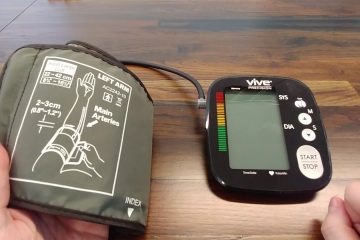Is Back Pain Genetic Condition?

Back pain is a common complaint experienced by millions of people; however, the cause of this condition can be difficult to pinpoint. While there are many possible causes of back pain, including injury or illness, there is a growing body of evidence suggesting that genetics may play a role in some cases. In this article, we explore the science behind back pain and its potential genetic origins.
The Role of Genetics in Back Pain
It is a well-established fact that family history and genetics can predispose individuals to certain conditions and diseases. Research has shown that genetic factors can play a role in the development of various forms of back pain, including lumbar disc degeneration, sciatica, and spinal stenosis. In some cases, specific genetic mutations have been linked to back pain. For example, mutations in the gene encoding the matrix metalloproteinase-1 (MMP-1) enzyme have been found to be associated with a raised risk of lumbar disc degeneration, a common cause of lower back pain.
Various genetic polymorphisms, such as those in the vitamin D receptor gene, have also been shown to influence the risk of developing back pain. However, it is important to note that genetics are not the sole cause of back pain. Environmental factors, such as occupation, lifestyle, and body weight, can also contribute to the development of this condition. Understanding the causes of back pain in the morning routine can be advantageous in reducing your risk of developing this condition.
Treatment Options for Back Pain
When it comes to treating back pain, it is essential to consider the individual’s unique pain profile, including both their genetic and environmental risk factors. A comprehensive treatment plan may involve a combination of physical therapy, medication, and lifestyle changes.
For those suffering from chronic back pain that hasn’t responded to conservative treatments, a spinal decompression machine offers a non-surgical alternative. These machines gently stretch the spine, relieving pressure from the spinal discs and encouraging the flow of oxygen and nutrients that aid in the healing process.
In cases where nerve pain is present, medications such as anti-inflammatories and anticonvulsants may be prescribed to reduce discomfort. Other treatments, such as acupuncture or chiropractic adjustments, can also be beneficial in relieving nerve pain. In rare instances, surgery may be recommended for severe cases of back pain.
Prevention and Management Strategies
In addition to the treatments mentioned above, there are several steps individuals can take to prevent and manage back pain. These include practicing good posture, engaging in regular physical activity, maintaining a healthy weight, and being mindful of one’s ergonomics at home or work.
Moreover, knowing one’s family history and genetic predispositions can aid healthcare professionals in creating targeted management and prevention strategies. For example, if an individual has a specific genetic risk factor for back pain, their healthcare provider may recommend specific exercises or lifestyle modifications along with treatments such as a spinal decompression machine to reduce or prevent future pain.
To Sum Up
Back pain is a common condition that can be caused by both environmental and genetic factors. While genetics may increase one’s risk of developing back pain, proactive measures such as exercise, healthy body weight, and good posture can help to reduce this risk. In cases where conservative treatments have failed to provide relief from chronic back pain, spinal decompression machines offer an effective alternative. Understanding one’s genetic background and family history can also aid healthcare providers in creating personalized treatment plans that take into account an individual’s unique risk factors for back pain. Thank you for reading!









